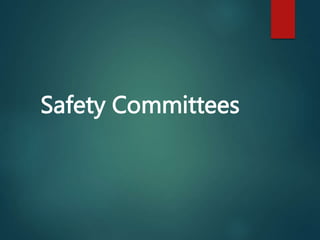The document outlines the essential components and best practices for safety committees in the workplace, emphasizing the importance of communication, dedication, and employee participation in fostering a safe environment. It details processes for hazard identification, risk assessment, and accident investigation, including strategies for implementation, supervision, and continual improvement of safety measures. Additionally, it highlights the need for emergency planning and record keeping to ensure readiness and compliance with safety regulations.




















































































































































































